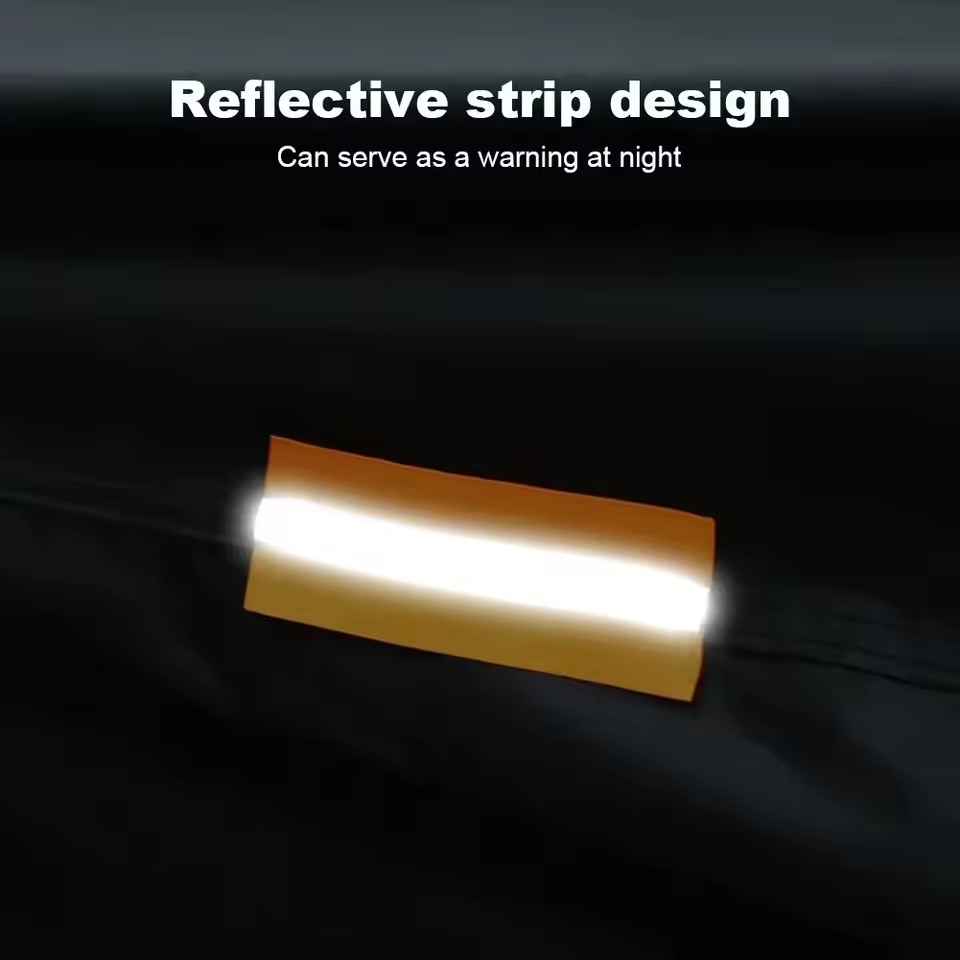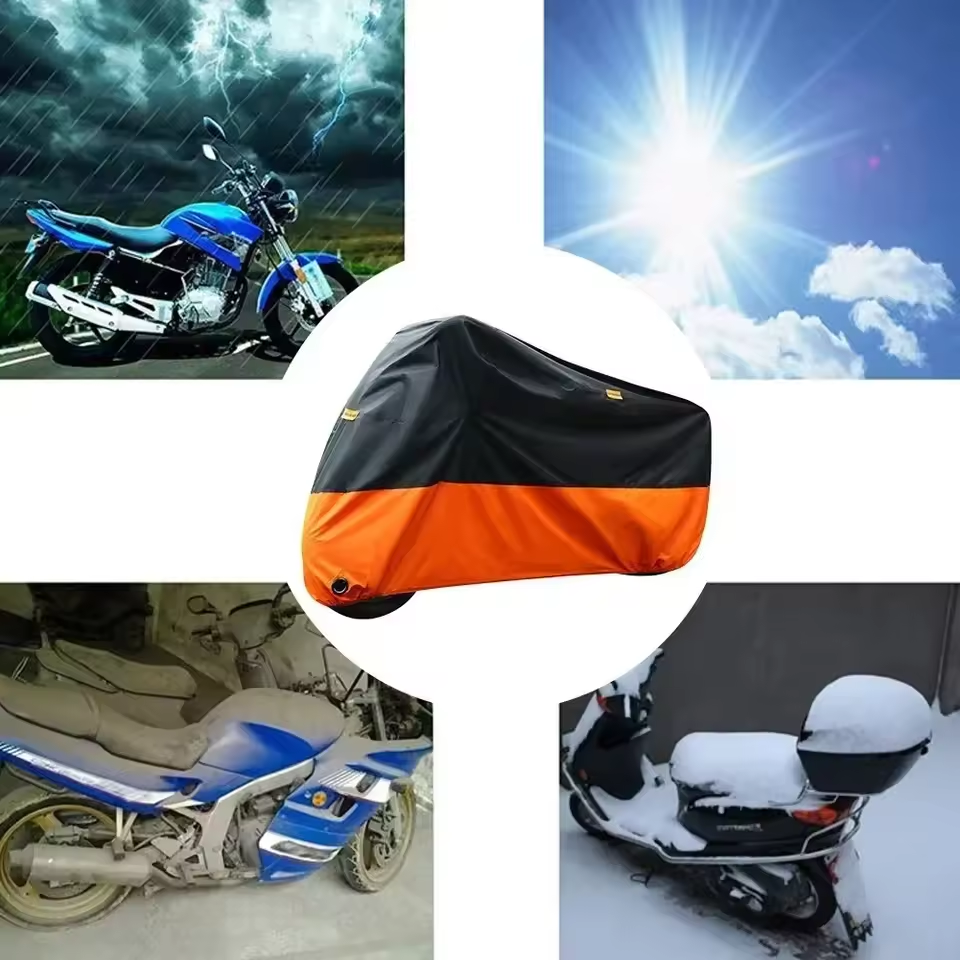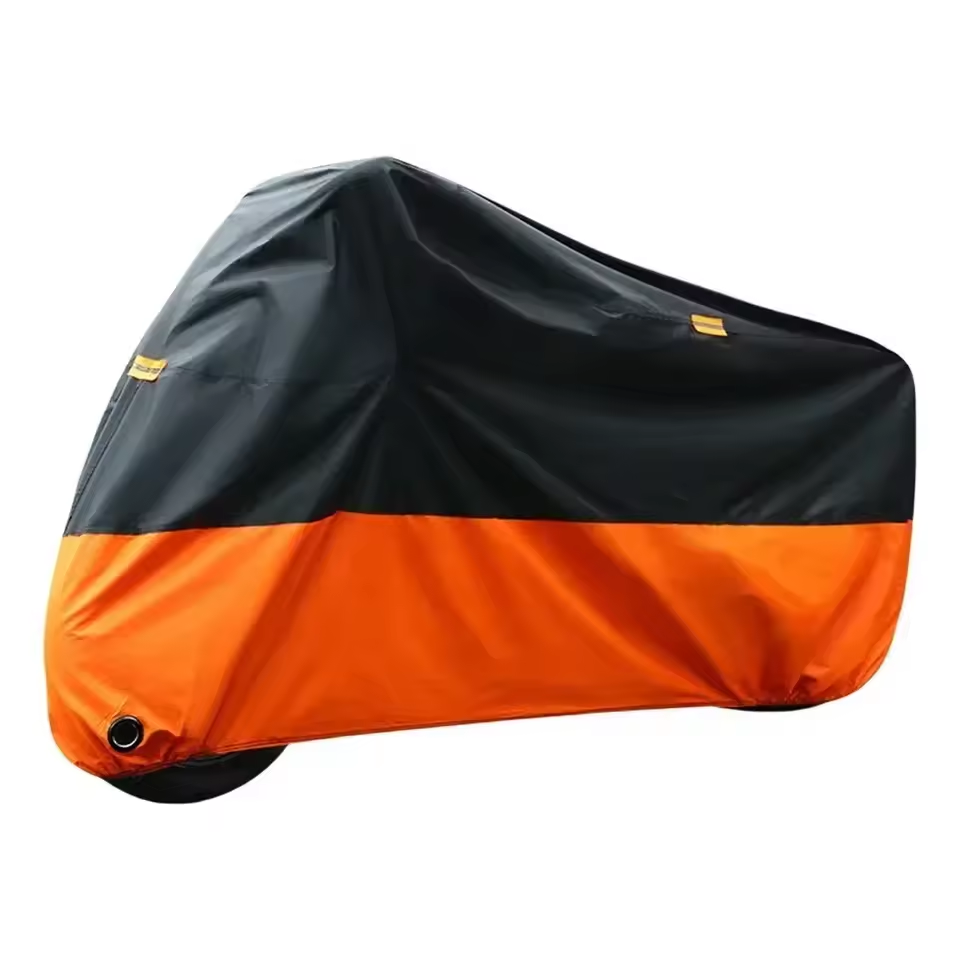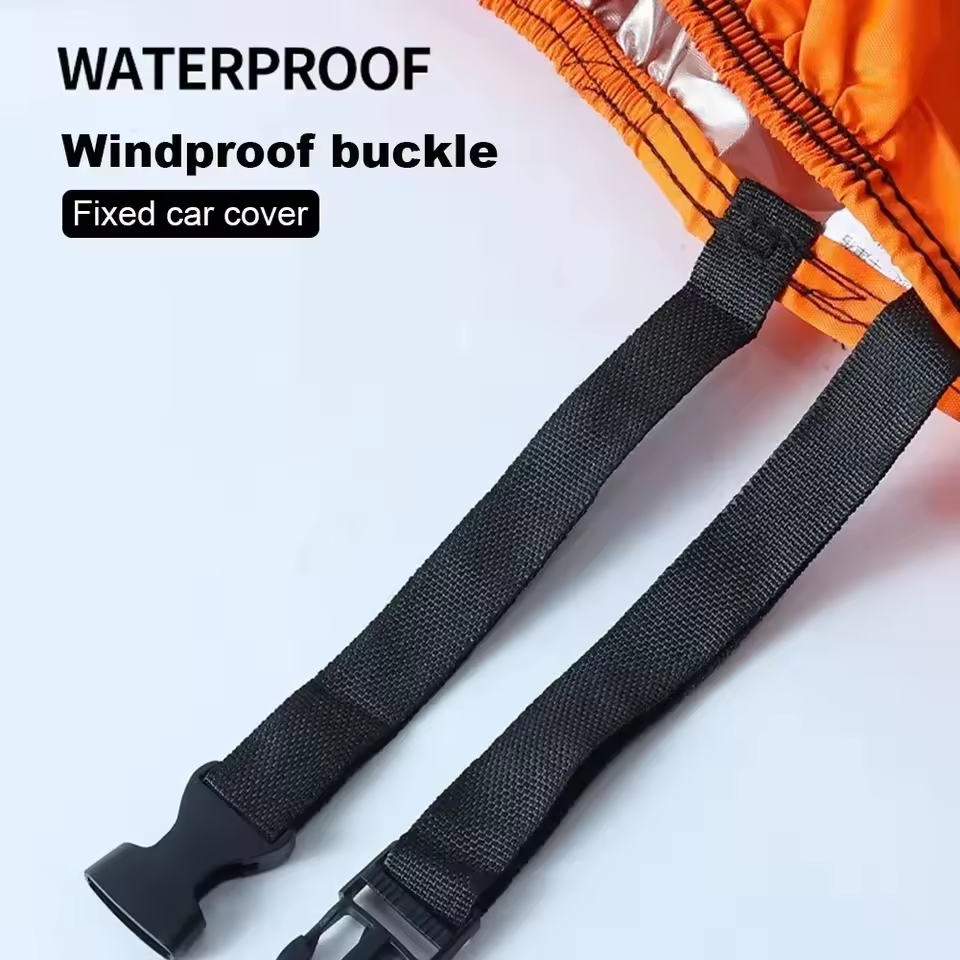Why Every Rider Needs a Motorcycle Cover
Every motorcycle owner should have a motorcycle cover—it’s one of the simplest yet most effective ways to protect their bike. Whether you park in a garage, driveway, or on the street, your motorcycle is constantly exposed to damaging elements like rain, snow, UV rays, dust, tree sap, and bird droppings. Over time, these can fade paint, corrode metal, and degrade rubber and plastic parts. A quality motorcycle cover acts as a protective shield, significantly reducing wear and keeping your bike looking newer for longer. It also helps prevent moisture buildup during storage, which can lead to rust and electrical issues.
For outdoor riders, a cover with UV resistance and waterproofing is essential. Even indoors, dust and humidity can cause damage—making an indoor cover a smart choice. Many covers also include lock loops for added anti-theft security, deterring thieves and protecting your investment. Plus, using a cover reduces cleaning time and preserves resale value. No matter the types of motorcycles you ride—cruiser, sportbike, or adventure—every rider benefits from the peace of mind a motorcycle cover provides. It’s a small price to pay for long-term protection and performance.

Key Features of a High-Quality Motorcycle Cover
A high-quality motorcycle cover does more than just drape over your bike—it actively protects your investment. Look for these essential features to ensure maximum durability and performance.
- Waterproof Material
Made from advanced fabrics like polyester with PVC backing or multi-layer polypropylene. Fully sealed seams prevent leaks, keeping your bike dry in heavy rain or snow. - UV Resistance
Includes UV-blocking coatings to shield paint and plastic from sun damage. Prevents fading, cracking, and oxidation during long-term sun exposure. - Breathable Fabric
Allows moisture vapor to escape while blocking outside water. Reduces condensation buildup that can lead to rust and mold under the cover. - Contoured Fit
Designed to match a motorcycle’s shape—tight around the tank, fenders, and tail. Minimizes wind flap and prevents fabric from rubbing against the paint. - Soft Inner Lining
Features a non-abrasive inner layer (like fleece or microfiber) to protect glossy finishes from scratches and swirl marks. - Elastic Hem & Straps
Equipped with elasticized edges or adjustable straps to secure the cover tightly. Prevents lifting in strong winds and ensures a snug fit. - Lock Loops or Anti-Theft Flaps
Reinforced openings near the bottom allow you to thread a security cable or chain through the wheels and anchor it to the ground or garage. - Ventilation Panels
Small vents reduce wind lift and allow airflow, improving stability and breathability during outdoor use. - Mirror and Antenna Pockets
Custom cutouts or expandable pockets accommodate side mirrors, GPS units, and antennas for a seamless fit. - Storage Bag Included
Comes with a compact carry bag for easy storage when not in use—ideal for garages, trunks, or sheds.
Choose a cover with these features to ensure your motorcycle stays clean, dry, and secure in any condition.

How to Choose the Right Fit for Your Bike
Choosing the right fit for your motorcycle cover is crucial for maximum protection and durability. A poorly fitting cover can flap in the wind, scratch the paint, or let water seep in—defeating its purpose.
Start with Universal vs. Custom Fit
Universal covers work for a range of bike sizes and are often more affordable. However, they may require straps or drawstrings to stay secure. Custom-fit covers are designed for specific makes and models, offering a snug, tailored fit that hugs your bike’s shape perfectly.
Measure Your Motorcycle
Use a tape measure to check your bike’s length—from the tip of the front wheel to the rear fender. Also note seat height and width, especially if you have accessories like saddlebags or a tall windshield. Compare these numbers to the manufacturer’s size chart before buying.
Consider Your Accessories
Aftermarket parts can affect fit. If you have crash bars, luggage, or an extended fender, choose a cover designed for touring bikes or one with extra room.
Check the Closure System
Look for elastic hems, adjustable straps, or buckle closures. These keep the cover tight and prevent wind lift. Reinforced grommets allow you to add a lock for theft protection.
A well-fitted motorcycle cover stays in place, protects every angle, and keeps your bike safe in any weather. Take time to measure and choose wisely—it’s worth the effort.
Weatherproofing: Staying Dry in Rain and Snow
When your motorcycle is parked outside, it faces constant threats from rain, snow, and moisture. A high-quality motorcycle cover is your best defense against these elements—especially if it’s truly weatherproof.

- Waterproof vs. Water-Resistant
Not all covers are the same. Look for a cover labeled fully waterproof, not just water-resistant. These use sealed seams and materials like PVC-coated polyester that block water completely, preventing leaks during heavy downpours. - Sealed Seams and Storm Flaps
Even the best fabric can fail if seams are exposed. High-end covers feature taped or welded seams to stop water from seeping through stitch lines. Some even have storm flaps over zippers or vents for extra protection. - Sloped Design for Snow Shedding
In snowy areas, a cover should have a slightly angled or contoured shape. This helps snow slide off naturally instead of piling up and causing sagging or fabric strain. - Ventilation to Prevent Condensation
A breathable yet waterproof cover allows moisture vapor to escape. This reduces condensation buildup underneath, which can lead to rust on metal parts and electrical systems. - Wind Resistance Matters
Strong winds can lift a loose cover, letting rain in. Choose one with elastic hems, undercarriage straps, or tie-down points to keep it securely in place.
With the right weatherproofing features, your motorcycle stays dry, protected, and ready to ride—even after days of rain or snow.
Security Features to Prevent Theft
A motorcycle cover isn’t just for weather protection—it can also be a smart anti-theft tool. While it won’t replace a good lock, it adds a valuable layer of security that deters opportunistic thieves.
Built-In Lock Loops
Most quality covers include reinforced openings near the bottom. These allow you to thread a cable lock, chain, or disc lock through the wheels or frame and anchor your bike to a fixed object like a garage floor or ground anchor. This makes it much harder to steal the bike without cutting the cover—drawing attention and time.
Anti-Theft Flaps and Pockets
Some advanced covers feature hidden flaps or internal pockets designed to conceal and secure locking mechanisms. These keep the lock out of sight and make tampering more difficult.
Visible Deterrence
A covered motorcycle looks less appealing to thieves. It’s harder to assess the model, condition, or value quickly. A clean, well-maintained cover signals that the owner is attentive—discouraging break-in attempts.
Use with Other Security Devices
Always pair your cover with a heavy-duty chain, U-lock, or alarm system. For added safety, consider GPS trackers placed under the cover or inside compartments.
While no cover is theft-proof, these features significantly increase the effort required to steal your bike. Combined with smart storage habits, a secure motorcycle cover can give you peace of mind—especially when parking outdoors or in unmonitored areas.

Indoor vs. Outdoor Motorcycle Covers
Choosing between an indoor and outdoor motorcycle cover depends on where you store your bike and the level of protection you need. While both aim to shield your motorcycle, they differ significantly in design and function.
- Purpose and Protection Level
Indoor covers focus on dust, scratches, and light protection. They’re ideal for bikes stored in garages or storage units. Outdoor covers, however, are built to withstand harsh weather—rain, snow, UV rays, wind, and temperature swings—making them heavier and more durable. - Material and Construction
Indoor covers use lightweight, soft fabrics like microfiber or non-woven polypropylene. These prevent surface scratches and allow breathability. Outdoor covers use multi-layer materials such as waterproof polyester with PVC backing, UV inhibitors, and reinforced stitching to endure extreme conditions. - Water Resistance
Outdoor covers are fully waterproof with sealed seams to block moisture. Indoor covers are not waterproof and may absorb water if exposed to leaks or humidity, potentially trapping dampness against the bike. - Ventilation and Breathability
Both types benefit from breathability, but outdoor models often include ventilation panels to reduce condensation and wind lift. Indoor covers rely on natural airflow in a controlled environment. - Security Features
Outdoor covers frequently include lock loops or anti-theft flaps for added security. Indoor covers rarely have these, as theft risk is typically lower in private spaces. - Fit and Design
Outdoor covers often have elastic hems, adjustable straps, or undercarriage anchors to stay secure in wind. Indoor covers usually have a simple pull-over design with a loose or semi-custom fit.
For best results, use the right cover for your environment. Never use an indoor cover outside. For maximum protection, some riders use both—a waterproof outdoor cover for long-term storage, and a soft indoor one for daily use.
Maintenance Tips for Long-Lasting Use

To ensure your motorcycle cover remains effective and durable for years, proper care is essential. A little maintenance goes a long way in preserving its protective qualities. Here are key tips to keep it in top condition:
- Clean Regularly
Wipe down the cover with a soft cloth, mild soap, and lukewarm water to remove dirt, grime, and organic debris like bird droppings or tree sap. These substances can break down waterproof coatings over time if left untreated. - Rinse and Air Dry Completely
After cleaning, rinse thoroughly with clean water. Always let the cover dry fully in a shaded area before storing. Never fold or pack it while damp—this encourages mold, mildew, and fabric degradation. - Avoid Harsh Cleaners and Machines
Do not use bleach, solvents, or pressure washers. These can strip waterproof layers and damage fabric integrity. Unless specified by the manufacturer, avoid machine washing or drying. - Inspect for Damage
Check periodically for tears, fraying seams, worn straps, or weakened grommets. Small punctures can be repaired with a patch kit designed for outdoor gear, preventing further deterioration. - Store Properly
Keep the cover in its storage bag and place it in a cool, dry location away from direct sunlight. UV exposure can weaken fibers and fade colors over time, even when not in use. - Use on a Clean, Dry Bike
Always cover a motorcycle that’s clean and dry. Trapped moisture can lead to rust or corrosion underneath, defeating the purpose of protection. - Secure Without Over-Tightening
Use straps and elastic hems as intended. Over-tightening can stress seams and cause premature wear.
With consistent care, your motorcycle cover will continue to protect your bike season after season—maximizing value and performance.
How a Motorcycle Cover Saves You Money
A motorcycle cover is a small investment that delivers big savings over time. Without one, your bike is exposed to rain, UV rays, dust, bird droppings, and tree sap—all of which cause gradual damage. Paint fades, metal rusts, rubber cracks, and cleaning becomes more frequent and costly. A quality cover prevents these issues, reducing the need for detailing, touch-ups, and part replacements.
It also protects against moisture buildup during storage, which can lead to expensive engine or electrical repairs—especially after winter. By preventing rust and corrosion, you avoid costly maintenance and extend the life of your motorcycle.
For outdoor riders, a cover preserves resale value. A well-protected bike looks newer longer, fetching a higher price when it’s time to sell.
Many covers include lock loops, adding anti-theft protection and lowering the risk of total loss.
When you consider the cost of repairs, replacements, and lost value, a 50–150 cover pays for itself quickly. Whether you ride daily or only on weekends, using a motorcycle cover is one of the smartest ways to protect your passion—and your wallet.